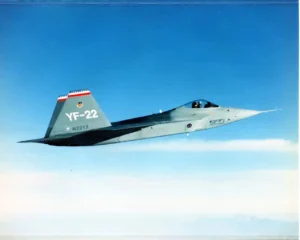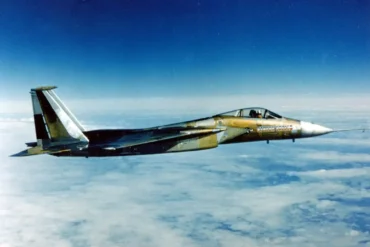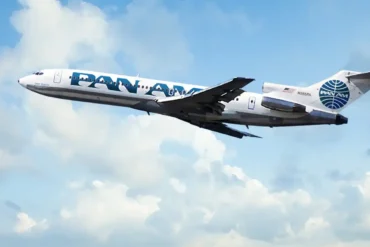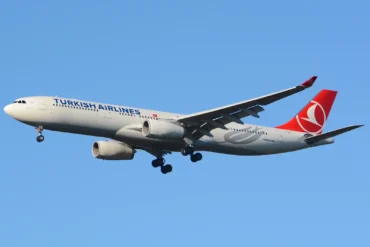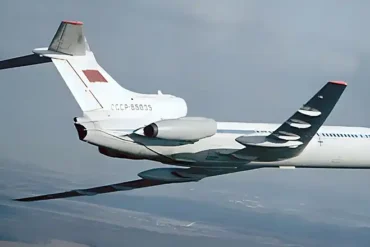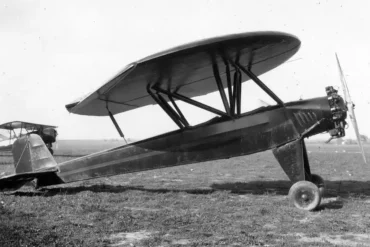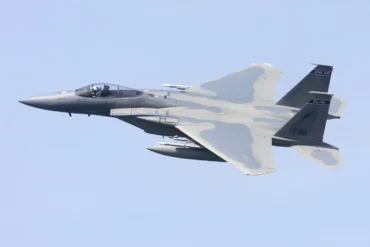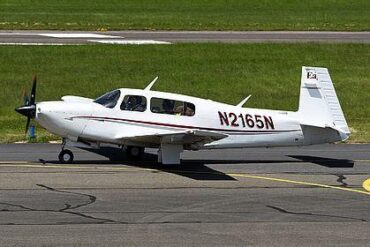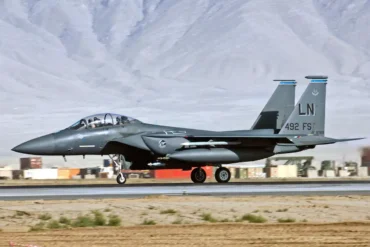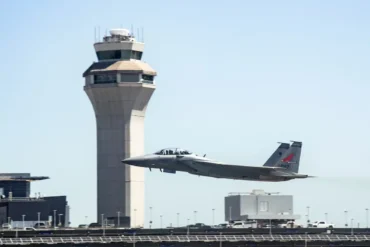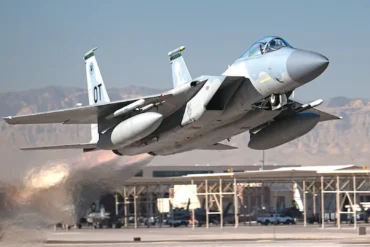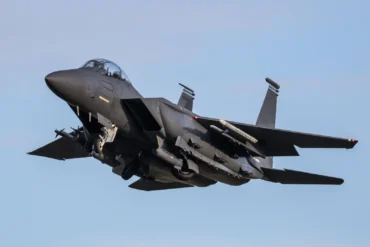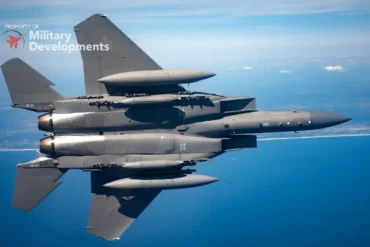The F-22 Raptor and the F-15 Streak Eagle are two of the most formidable fighter jets in modern aviation history. Each has its own set of achievements, but when it comes to the record books for time-to-climb, the F-15 Streak Eagle holds a significant place, specifically for its record-setting ascent to 30,000 meters. However, with advancements in technology and the capabilities of modern fighter jets like the F-22 Raptor, one might wonder: could the F-22 beat the time-to-climb records set by the Streak Eagle all those years ago? This article explores the technical specifications, performance factors, and practical constraints that could influence such a record-breaking attempt.
Understanding the Time-to-Climb Records
The time-to-climb record is a measure of how quickly an aircraft can reach a certain altitude, often measured in meters per second (m/s). For decades, the Streak Eagle, a modified version of the F-15, has held the record for the fastest climb to 30,000 meters. Its design focused on achieving the maximum rate of climb by exploiting unique engine configurations and flight profiles. To understand whether the F-22 could outperform this record, we must first explore the capabilities of both aircraft in great detail.
The F-15 Streak Eagle: A Record-Breaking Climb
The F-15 Streak Eagle was specifically modified to break records, and it did so with unparalleled success. The aircraft weighed approximately 25,870 pounds, a relatively light weight for a fighter jet of its class. This allowed it to achieve a thrust-to-weight ratio (T:W) of 1.85, a key factor in the aircraft’s climbing ability. The Streak Eagle’s engines, based on the F-100-PW-100 turbofan, were tuned for maximum performance, which increased their thrust significantly, pushing it to approximately 27,500 lbf per engine in its highest settings.
The Streak Eagle’s climb to 30,000 meters required it to achieve Mach 2.2 at 37,000 feet before pulling up into the steep climb. The aircraft made use of variable geometry intake ramps to manage airflow at high speeds, a critical feature for high Mach number operations. This configuration allowed it to break the time-to-climb record, reaching altitudes that remain difficult for most aircraft to match.
The F-22 Raptor: A Modern Superiority in Climbing
The F-22 Raptor, a fifth-generation stealth fighter, was designed with a different set of objectives. While the F-22 is known for its air superiority and advanced avionics, its performance in time-to-climb may not be as straightforward as the Streak Eagle’s. The F-22 is a production aircraft, which means it is equipped with a variety of systems that may not be optimized for record attempts. In contrast, the Streak Eagle was heavily modified for the specific purpose of breaking time-to-climb records.
With an empty weight of 43,340 pounds, the F-22 is significantly heavier than the Streak Eagle. However, the F-22 is equipped with more powerful engines. The F-119-PW-100 engines on the F-22 produce around 35,000 pounds of thrust each, although this number is intentionally conservative. Real-world estimates suggest that the F-22 engines can produce considerably more thrust under certain conditions. The F-22’s thrust-to-weight ratio (T:W) is 1.61, lower than the Streak Eagle’s, but this figure could improve if the aircraft were stripped of non-essential systems for a record attempt.
YF-22 Prototype: A More Suitable Candidate for a Record Attempt
While the production F-22 might not be the best candidate for breaking the time-to-climb record, the YF-22 prototype could potentially outperform the Streak Eagle. The YF-22 had an empty weight of just 33,000 pounds, which would have resulted in a thrust-to-weight ratio of 2.12 with its engines, significantly higher than that of the F-22 and Streak Eagle. The YF-22’s aerodynamic design and reduced weight would likely give it a considerable advantage in a time-to-climb competition, assuming it could achieve the necessary speeds and altitudes.
Key Factors Influencing Climb Performance
In comparing the F-22 and Streak Eagle’s potential in time-to-climb records, several technical factors come into play, including engine performance, flight profiles, and aircraft weight.
1. Engine Performance and Thrust-to-Weight Ratio
One of the most critical components of climb performance is the engine’s thrust-to-weight ratio (T:W). The Streak Eagle’s T:W of 1.85 provided it with an edge over most other aircraft of its era. The F-22’s T:W of 1.61 is lower, but the F-22 has access to much more advanced and powerful F-119 engines. These engines have been known to produce thrust figures well beyond their nominal specifications under optimal conditions, making the F-22’s engine performance potentially more competitive than initially estimated.
The YF-22 prototype, with its lighter weight and higher T:W ratio, could have a better chance at breaking the record compared to the production F-22, especially in terms of climb performance at lower altitudes.
2. Flight Profiles: Supersonic vs. Subsonic
The flight profile used for a time-to-climb attempt can significantly impact performance. The Streak Eagle achieved its climb by first accelerating to Mach 2.2 at 37,000 feet before pulling into a steep climb. This high-speed dash to altitude is essential for breaking climb records at higher altitudes. In contrast, the F-22’s flight profile is optimized for supersonic climb, where it accelerates at subsonic speeds before pulling up and continuing to climb at supersonic speeds. This difference in flight profile could potentially limit the F-22’s ability to break the record set by the Streak Eagle, particularly for higher altitude climbs.
Additionally, the F-22’s ramjet coatings could restrict its maximum speed to Mach 1.6 if fully equipped, which might not be sufficient for breaking the high-altitude records held by the Streak Eagle.
3. Aircraft Weight and Modifications
The weight of the aircraft plays a crucial role in determining how quickly it can climb. The Streak Eagle’s relatively low weight compared to the F-22 gives it an inherent advantage in time-to-climb performance. However, the F-22 could likely reduce its weight for a record attempt by removing non-essential systems. This would improve its T:W ratio, making it a more competitive candidate for breaking the record, especially at lower altitudes.
Additionally, the YF-22 prototype, which is much lighter than the production F-22, would offer even greater potential for beating the time-to-climb records.
Practical Limitations: Why the F-22 Might Not Attempt the Record
While the F-22 might have the theoretical potential to break the Streak Eagle’s time-to-climb records, there are several practical limitations that make such a record attempt unlikely. One significant factor is the classification of the F-22’s true engine performance. While official figures suggest a thrust output of around 35,000 pounds, there are strong indications that the F-22’s engines can produce much more under specific conditions. The U.S. Air Force has strict policies on not releasing such data, which makes it difficult to gauge the aircraft’s true performance.
Moreover, the F-22 is designed primarily for air superiority and not for record-breaking performances. Engine wear and data collection concerns would make it highly unlikely for the F-22 to undergo a time-to-climb attempt where such sensitive information could be extrapolated.
Additionally, the stability of the airframe and the material limitations of the F-22’s systems may not be suited for sustained high-performance climbs that push the aircraft to its limits. This is especially true for the engine health of the F-22, which could suffer from the intense strain of a time-to-climb attempt.
Conclusion: Can the F-22 Beat the Streak Eagle’s Time-to-Climb Records?
While the F-22 Raptor is undoubtedly a technological marvel with impressive capabilities, it is unlikely to beat the F-15 Streak Eagle’s time-to-climb records under normal circumstances. The Streak Eagle was specifically engineered for this purpose, with modifications to its engine and airframe that allowed it to achieve its highly impressive climb performance.
However, the YF-22 prototype stands as a more competitive candidate in this regard, thanks to its lower weight and higher thrust-to-weight ratio. If such an aircraft were put into a record attempt with the necessary modifications and optimal conditions, it could very well surpass the Streak Eagle’s record.
In the end, the F-22, particularly in its current production form, is likely not fast enough or light enough to challenge the Streak Eagle’s high-altitude climb records, especially in the face of specialized aircraft like the Mig-25 Ye-266, which still holds the 35 km record.
